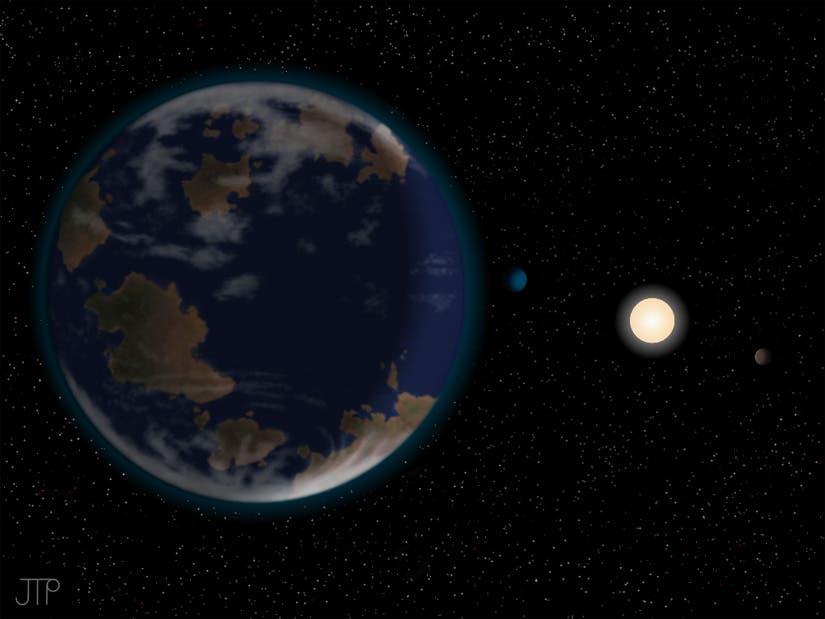Astronomers have used a novel planet hunter instrument to detect a new possible life supporting, Earth-like exoplanet. In fact the new planet is classed as a super-Earth, since it has a minimum mass of 7.1 times that of our planet, and is properly located on its parent star’s orbit to support the presence of liquid water – the main prerequisite for life.
The newly found exoplanet giant is the farthest of six planets revolving around HD 40307, a dwarf-star three-quarters as massive as the sun and located about 42 light-years away in the constellation Pictor. Initially only three planets were identified around the dwarf-star, but recent observations by astronomers using the Harps instrument at the European Southern Observatory’s La Silla facility in Chile have rendered three more planets to the system.

However, only the farthest away, the super-Earth sized one, is of particular interest to scientists, since it’s believed to fly around its parent star over 320 days, a distance that places it within HD 40307’s so-called “habitable zone.” Its other five brothers are simply too close to the star to support life.
Planet hunters like the Kepler telescope typically make use of the transient effect that planets induce whenever they pass between a star and Earth’s vantage point. As the planet passes-by between the observer and the star, a change in brightness occurs and according to the intensity of the flare, scientists can not only tell whether a planet or more are revolving around the star, but also their properties like mass and density.
The planetary system around HD 40307 has an architecture radically different from that of the solar system, however. Harps does not spot planets directly, like Kepler does by studying planet transience. Instead, it detects the slight changes in colour of a stars’ light caused by planets’ gentle gravitational tugs – the “redshift” and “blueshift” that small motions cause.
“All we know at this point is that it has a minimum mass of about 7.1 Earth-masses. We have no explicit follow-up planned, thought the HARPS team is probably still gathering more data, and may in the future be able to confirm these results, and perhaps add even more planets to the brood,” astronomer Steven Vogt, with the University of California’s Lick Observatory, wrote in an email to Discovery News.
“We feel pretty confortable that these six panets are all there,” Vogt said.
The team say that the next step is to use space-based telescopes to get a more direct look at the planet and assess its composition. Who knows, maybe astronomers just struck gold! Then again, this new planet joins a selected list of 800 other possible Earth-like candidates found so far. We can only rejoice at an even grander list. Chances are, little by little, we’ll find IT.


